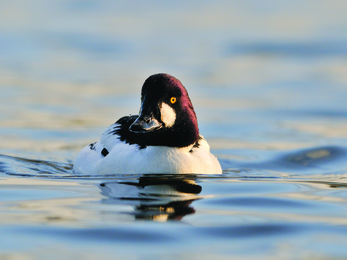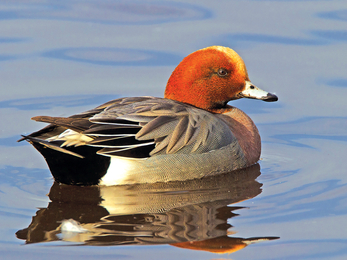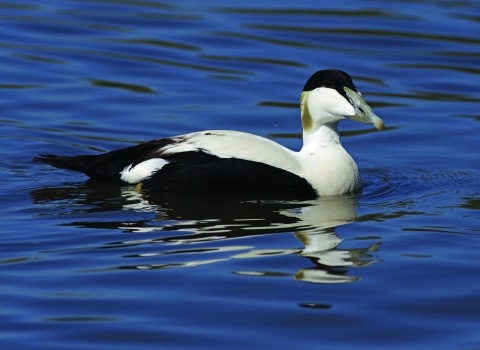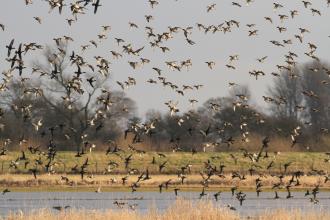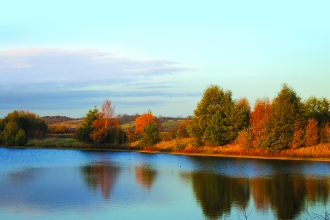Most people’s image of ducks is restricted to the green-headed mallard pairs you see in local duck ponds. But in reality, there are over twenty species of ducks in Yorkshire alone!
Ducks are part of the ‘waterfowl’ family which also includes geese and swans. In the northern hemisphere, male ducks (drakes) have bright plumage to attract a mate. The females (ducks) have dull-brown feathers so they can hide from predators and camoflage themselves in their nests to protect their young.
During winter, one of our most spectacular ducks can be seen on any areas of open freshwater - the goldeneye. The drakes are black and white, with a green-ish head and a small white patch directly below a brilliant yellow eye. This annual winter visitor is also called the 'whistler' after the distinctive sound its wings make during flight.
The goldeneye is a diving duck, whereas its freshwater fellow the wigeon is a dabbling duck. Unlike diving ducks, dabbling ducks mainly feed on the surface of the water. Wigeons tend to feed alongside diving ducks, eating any spare vegetation brought to the surface.

